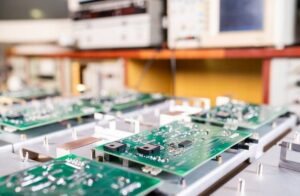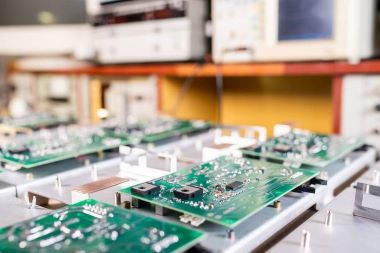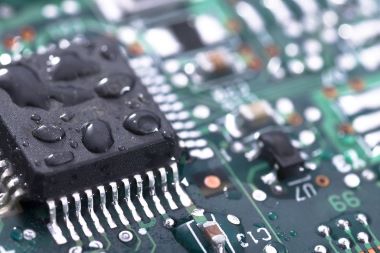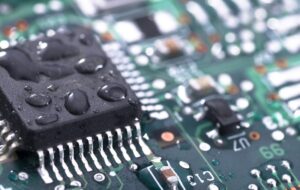
Soldering is an important part of the printed circuit board manufacturing process. The reliability of a circuit board is achieved by sticking electronic components to your board through soldering. Wave soldering and reflow soldering are common soldering methods for PCB assembly.
Each method has its advantages and disadvantages, and this article will walk you through their meaning and application.
What is wave soldering?
Wave soldering is a batch soldering process that allows many boards to be manufactured in a very short period of time.
It is called “wave soldering” because the soldering surface of the plug-in board is in direct contact with the high-temperature liquid tin, which maintains a sloping surface, and a special device makes the liquid tin form a wave-like phenomenon.
Wave soldering process
- Insert the component into the corresponding hole
- Pre-application of flux
- Preheat (90-100 ℃)
- Wave soldering (220-240 ℃)
- Cooling
- Cut off excess plug-in pins
- Inspection
During the wave soldering process, it is worth noting that proper temperature is very important. Failure to adequately control the temperature may result in cracking and electrical loss.
Wave Soldering Disadvantages
- Solder consumption
- Flux consumption
- Nitrogen consumption
- Power consumption
- Need for solder rework after wave soldering
- Need to clean wave solder holes and solder components
What is reflow soldering?
Reflow soldering is different from wave soldering and is commonly used to solder surface mount components. It is refers to the use of solder paste (a mixture of solder and flux) to connect one or more electronic components to a contact pad and then melt the solder by controlled heating to achieve a permanent bond.
Reflow soldering process flow.
- Apply pre-solder paste
- SMT (manual or automatic machine placement)
- Reflow soldering
- Inspection and electrical test
Wave vs. reflow soldering
The choice of which type of soldering to use depends on a variety of factors, such as pad shape, component orientation, PCB type, etc.
For printed circuit boards with through-hole components and larger surface mount components, wave soldering is an ideal method.
However, in some ways, wave soldering is more complex and requires careful monitoring of issues such as board temperature and the time the board spends in the solder wave. Failure to create the correct wave soldering environment is more likely to result in board defects.
When using reflow soldering to manufacture printed circuit boards, you don’t need to worry about controlling the environment.
To sum up, wave soldering is faster, cheaper, and cost-effective for high-volume orders. Reflow soldering is typically used for small-scale manufacturing products that do not require a method suitable for fast, inexpensive mass production.
Explore KingPCB’s PCB assembly services
The type of soldering is just one of the many elements of PCB assembly. Choose your soldering partner wisely, research carefully for your requirements and provide a soldering process that works for you.
KingPCB is very knowledgeable about solder types and other elements of PCBs, such as types of substrate materials, board variations, and important design features.
To learn more about KingPCB’s fabrication and assembly information, contact us now!






